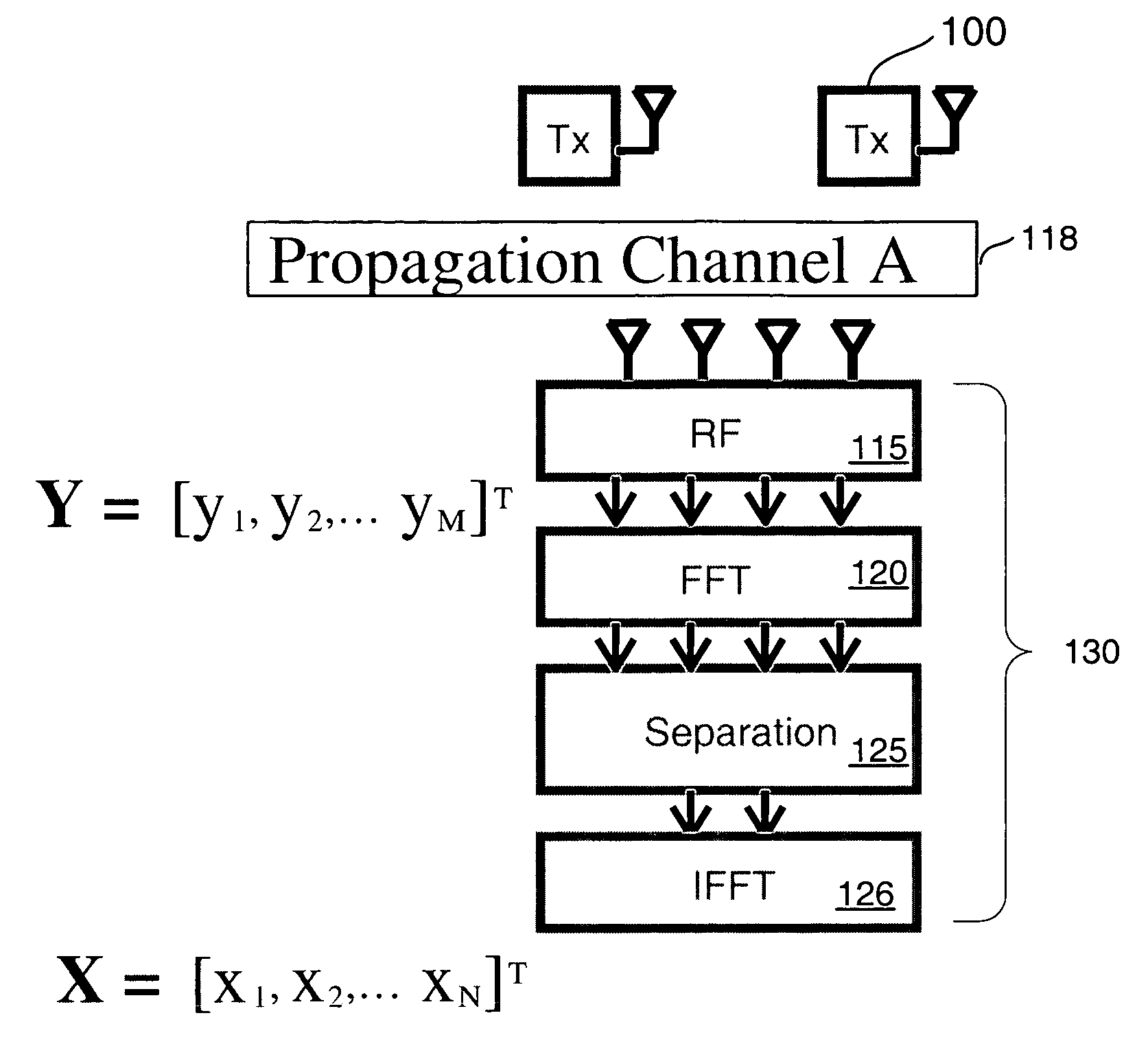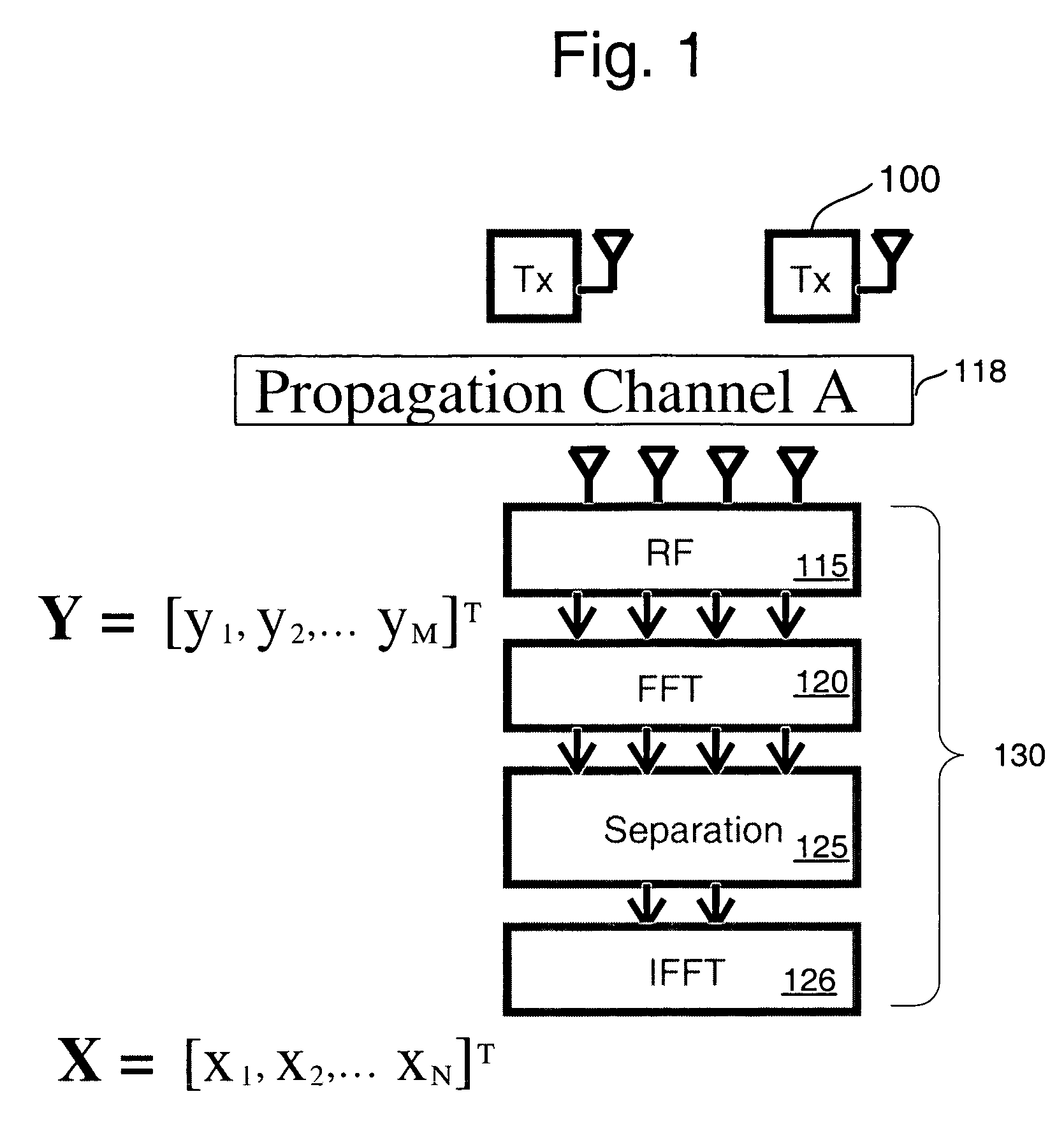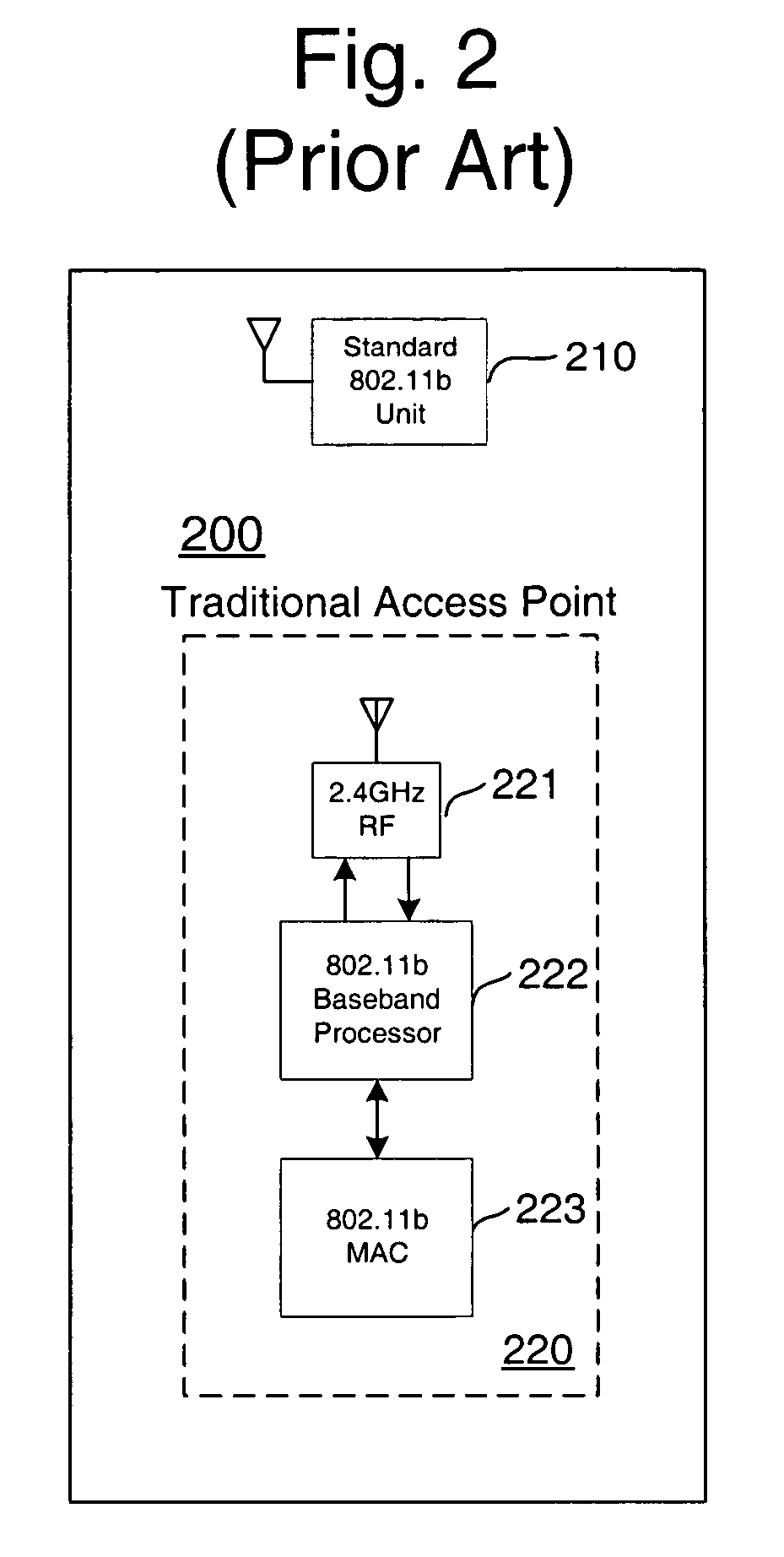System and method for achieving timing compatibility with multi-antenna wireless data protocols
a wireless data protocol and timing compatibility technology, applied in the field of radio frequency access points, can solve the problems of high cost, unrealized performance, system cost, etc., and achieve the effect of rapid growth
- Summary
- Abstract
- Description
- Claims
- Application Information
AI Technical Summary
Problems solved by technology
Method used
Image
Examples
Embodiment Construction
General Overview
[0064]As alluded to above, generally speaking, as the noise and interference in a wireless medium increases, the decipherable signal radius decreases. As a result, additional access points (APs) are required to complete coverage for a given area increasing costs and contributing to more interference. The present invention uses a multi-antenna approach that reduces those effects of multipath, interference, and noise through a technique generally referred to in the art as adaptive signal separation processing.
[0065]As further noted above, security, increased areas of operation (radius) and higher speeds are three (3) of the main barriers facing WLANs. The present invention makes use of adaptive signal separate processing to enhance the performance of WLAN 802.11b network APs. The enhancement is referred to herein as 11be, and is intended to be used in the WLAN 802.11b AP with multiple antennas, RF receivers and transmitters. The present 11be technique serves as a scala...
PUM
 Login to View More
Login to View More Abstract
Description
Claims
Application Information
 Login to View More
Login to View More - R&D
- Intellectual Property
- Life Sciences
- Materials
- Tech Scout
- Unparalleled Data Quality
- Higher Quality Content
- 60% Fewer Hallucinations
Browse by: Latest US Patents, China's latest patents, Technical Efficacy Thesaurus, Application Domain, Technology Topic, Popular Technical Reports.
© 2025 PatSnap. All rights reserved.Legal|Privacy policy|Modern Slavery Act Transparency Statement|Sitemap|About US| Contact US: help@patsnap.com



